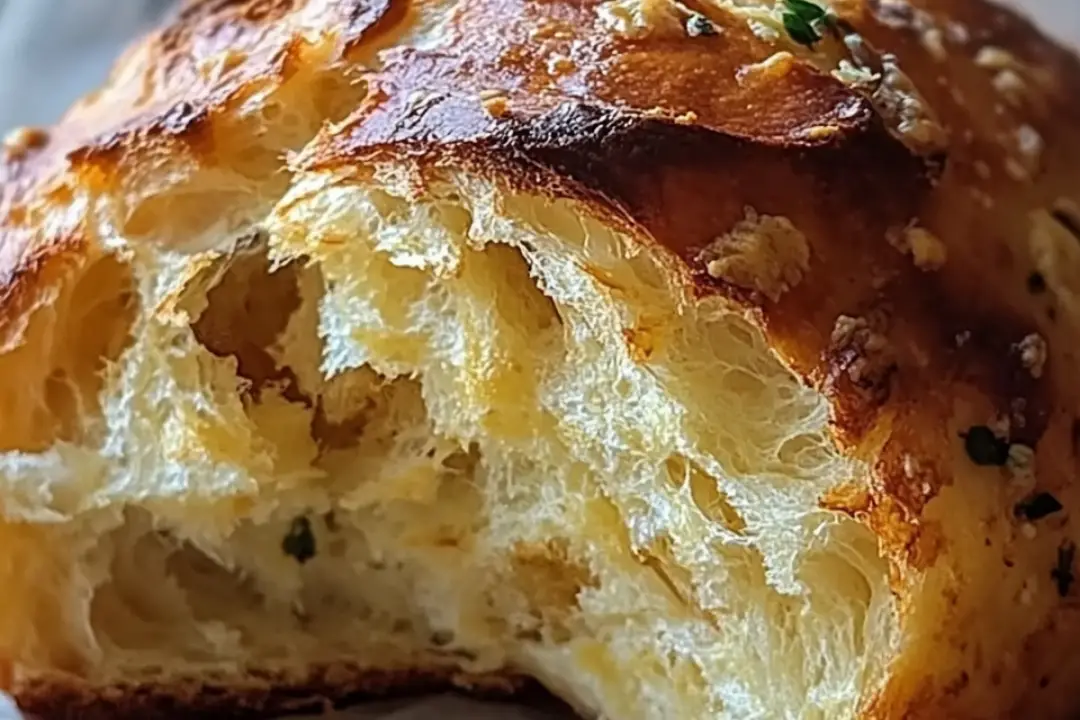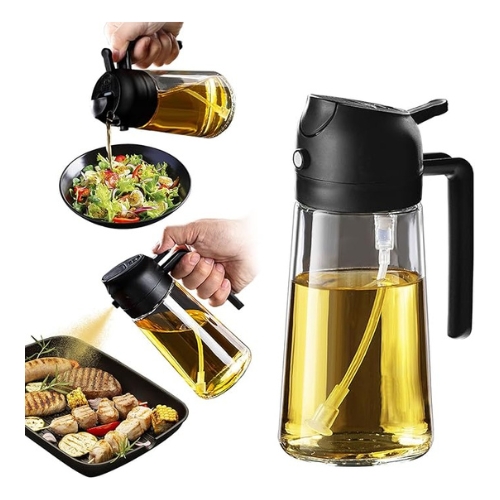If you’re looking for something unique, earthy, and surprisingly delightful, then Dandelion Bread might just be the perfect recipe to try. Imagine the subtle, slightly bitter flavor of dandelion greens, paired with the soft, comforting texture of freshly baked bread. The earthy flavors of the dandelions perfectly balance with the rich, tender bread, making each bite a surprising and delicious experience. This isn’t your average loaf of bread—it’s a wild, natural treat that connects you to the earth in the best way possible.
Whether you’re a forager, a lover of new food experiences, or simply looking to incorporate a touch of nature into your baking, this bread is a fun and flavorful way to experiment. It’s also a great conversation starter at dinner parties! Ready to give dandelion bread a try? Let’s get started!
Why You’ll Love Dandelion Bread
Unique Flavor
The dandelion greens provide an earthy, slightly bitter flavor that complements the soft, pillowy bread. The bitterness fades as the bread bakes, leaving behind a mild, herbaceous taste. It’s a flavor you won’t find in any store-bought loaf.
Connection to Nature
This bread connects you to nature in a way that store-bought bread can’t. Foraging dandelions from your yard (or a local, chemical-free area) allows you to embrace the natural world and make something delicious out of a common wildflower.
Simple Ingredients
Despite the uniqueness, this bread requires only simple, accessible ingredients. You don’t need to be a professional baker to whip up this loaf. If you’ve made basic bread before, you’ll feel right at home with this recipe!
Perfect for Adventurous Eaters
If you love to try new flavors and have an adventurous palate, this bread is for you! It’s a fantastic way to experiment with wild, foraged ingredients in your kitchen.

Disclosure: This post contains affiliate links.If you click and make a purchase, I may earn a small commission at no extra cost to you.
Ingredients
For the Dandelion Bread:
- Fresh dandelion leaves (be sure they are foraged from a chemical-free area)
- All-purpose flour
- Active dry yeast
- Sugar
- Salt
- Warm water
- Olive oil (or vegetable oil)
- Milk
- Optional: Honey or herbs for added flavor
(Note: Full ingredient measurements are provided in the recipe card below.)
Instructions
Ready to get baking? Let’s dive into the steps for making this wonderful Dandelion Bread!
Step 1: Forage Your Dandelions
Before you begin, go on a little nature walk and gather fresh dandelion leaves. Be sure you’re picking from a chemical-free area—ideally, your own backyard or a wild area where pesticides haven’t been used. Clean the leaves thoroughly to remove any dirt or debris. You’ll want about 1 cup of chopped dandelion greens for this recipe.
Step 2: Prepare the Yeast
In a small bowl, combine the warm water, sugar, and active dry yeast. Stir and let it sit for about 5-10 minutes, or until the yeast becomes frothy. This step helps activate the yeast, ensuring your bread rises perfectly.
Step 3: Mix the Dough
In a large bowl, combine the flour and salt. Once the yeast mixture is ready, pour it into the bowl with the flour. Add the olive oil and milk, then stir until the dough begins to form. If the dough is too sticky, add a little more flour, one tablespoon at a time, until it’s smooth and elastic.
Step 4: Incorporate the Dandelions
Chop the dandelion greens finely, and gently fold them into the dough. The dandelions will add flavor and a beautiful green hue to the bread. Mix until evenly distributed.
Step 5: Knead the Dough
Turn the dough out onto a floured surface and knead for about 5-7 minutes, until it’s smooth and elastic. If it’s too sticky, sprinkle a little more flour as you knead. The goal is to have a soft, supple dough.
Step 6: First Rise
Place the dough into a greased bowl and cover it with a clean towel. Let it rise in a warm place for about 1 hour, or until it doubles in size. This is where the dough does its magic and becomes fluffy and light.
Step 7: Shape the Dough
Once the dough has risen, punch it down to release the air bubbles. Shape the dough into a loaf, and place it in a greased loaf pan. Alternatively, you can shape it into rolls or any shape you prefer.
Step 8: Second Rise
Cover the shaped dough with a towel and let it rise again for about 30 minutes, or until it’s puffed up. This second rise helps create a lighter texture in the bread.
Step 9: Bake the Bread
Preheat your oven to 375°F (190°C). Once the dough has risen, bake it for 25-30 minutes or until the top is golden brown, and it sounds hollow when tapped. You can also check the internal temperature with a kitchen thermometer—it should read around 190°F (88°C) when fully cooked.
Step 10: Cool and Serve
Allow the bread to cool on a wire rack before slicing. Once cooled, slice and serve your Dandelion Bread. Enjoy it with butter, honey, or your favorite spread for an earthy and delicious treat.
Nutrition Facts
Servings: 12
Calories per serving: 160
Total Fat: 4g
Saturated Fat: 1g
Cholesterol: 5mg
Sodium: 250mg
Carbohydrates: 28g
Fiber: 1g
Sugars: 3g
Protein: 4g
Vitamin A: 2% DV
Calcium: 2% DV
Iron: 8% DV
Preparation Time
Prep Time: 20 minutes
Cook Time: 30 minutes
Total Time: 1 hour 50 minutes (including rising times)
How to Serve Dandelion Bread
Dandelion Bread is versatile and can be served in many ways. Here are some ideas to make the most of this earthy loaf:
As a Side Dish
Serve slices of this bread alongside a hearty soup or salad. The mild bitterness of the dandelions balances perfectly with rich, creamy soups, like potato leek or butternut squash soup.
With Butter and Honey
Spread butter and a drizzle of honey on a warm slice of bread for a sweet and savory snack. The slight bitterness of the dandelion pairs beautifully with the sweetness of honey.
For Sandwiches
Use this flavorful bread for sandwiches. Whether it’s a simple veggie sandwich or a more elaborate roast beef or cheese creation, the dandelion bread adds an earthy twist to any filling.
Toasted
Toast the slices for a crunchy, golden treat. Add a little butter or your favorite jam, and you’ve got a delicious breakfast or afternoon snack.
Additional Tips
- Wild Forage Tip: When foraging for dandelions, be sure they are from a pesticide-free area. Avoid picking from areas near roads or in parks that might be treated with chemicals.
- Flavored Bread: If you want to enhance the flavor, consider adding garlic, rosemary, or even a bit of grated Parmesan to the dough along with the dandelions.
- Vegan Option: For a vegan version, replace the milk with plant-based milk (like almond or oat milk), and use a vegan-friendly oil instead of olive oil.
- Make Ahead: You can prepare the dough the night before and let it rise overnight in the fridge for a slow fermentation. This will enhance the flavor of the bread and give it a richer texture.
FAQ Section
Q1: Can I use dried dandelions instead of fresh?
A1: Fresh dandelions work best for this recipe, but if you only have dried dandelions, you can try using them. Just make sure to rehydrate them in water before adding them to the dough.
Q2: How do I know when the bread is done?
A2: The bread is done when it’s golden brown on top, and it sounds hollow when tapped. You can also use a kitchen thermometer—when the internal temperature reaches 190°F (88°C), it’s ready.
Q3: Can I use a bread machine for this recipe?
A3: Yes! You can use a bread machine to make the dough. Follow the manufacturer’s instructions, adding the ingredients in the recommended order. Once the dough is ready, shape it and let it rise before baking.
Q4: How do I store leftovers?
A4: Store leftover dandelion bread in an airtight container at room temperature for 2-3 days. You can also freeze slices for up to 1 month—just toast them when ready to enjoy.
Q5: Can I add other herbs or flavors to this bread?
A5: Absolutely! You can add rosemary, thyme, garlic, or even a bit of lemon zest for a fresh twist. The dandelions provide a mild base that pairs well with many flavors.
Q6: Is dandelion bread suitable for people with gluten allergies?
A6: Unfortunately, this recipe contains all-purpose flour, so it’s not gluten-free. However, you can try substituting with a gluten-free flour blend and see how it works.
Q7: Can I make dandelion rolls instead of a loaf?
A7: Yes! After the first rise, you can divide the dough into smaller pieces and shape them into rolls. Let them rise for the second time and bake them as you would the loaf.
Q8: Can I use other wild greens besides dandelions?
A8: Yes! You can experiment with other wild, edible greens like chickweed, nettles, or lamb’s quarters. Just make sure they’re safe to eat and free from chemicals.
Q9: Can I use this bread for stuffing or croutons?
A9: Absolutely! The slightly firm texture of dandelion bread makes it a great option for croutons or stuffing. Just cut it into cubes and toast for croutons or use it in your favorite stuffing recipe.
Q10: How can I make this recipe more sourdough-like?
A10: To give this bread a tangy, sourdough-like flavor, you can incorporate a sourdough starter into the dough. This will require a longer fermentation process but will yield a deliciously tangy loaf.
Conclusion
Dandelion Bread is an incredibly fun, unique way to bring a wild touch to your baking. Whether you’re a seasoned forager or a first-time bread baker, this recipe is a great way to embrace nature’s bounty. The earthy flavor of dandelions adds a beautiful complexity to the bread, making it something truly special. Give it a try and enjoy the delicious flavors of the wild in every bite!
Print
Dandelion Bread
- Total Time: 0 hours
- Yield: 1 loaf (about 8-10 slices)
Description
-
Dandelion Bread is a delicious, rustic bread made with fresh dandelion flowers, which add a mild sweetness and a pop of color. It’s perfect for a spring breakfast, or as a unique addition to your homemade bread collection. Enjoy it fresh, toasted, or with butter and jam!
Ingredients
-
2 cups fresh dandelion petals (about 2 cups of dandelion flowers, petals separated from green stems)
-
2 cups all-purpose flour (or whole wheat flour for a more rustic bread)
-
1 tablespoon baking powder
-
1/2 teaspoon salt
-
1/4 cup sugar (or honey for a more natural sweetness)
-
1/2 cup milk (or almond milk for dairy-free)
-
1/4 cup unsalted butter, melted (or coconut oil for a dairy-free option)
-
1 egg, beaten
-
1 teaspoon vanilla extract (optional, for extra flavor)
Instructions
-
1. Prepare the Dandelion Petals:
-
Carefully pick dandelion flowers, ensuring they are free of pesticides or other chemicals. Separate the yellow petals from the green stems, discarding the stems and keeping only the petals. You will need about 2 cups of petals for the recipe.
2. Preheat the Oven:
-
Preheat your oven to 350°F (175°C). Grease or line a loaf pan with parchment paper.
3. Mix Dry Ingredients:
-
In a large bowl, whisk together the flour, baking powder, salt, and sugar. This will help ensure the bread rises evenly.
4. Add Wet Ingredients:
-
In another bowl, whisk together the milk, melted butter, beaten egg, and vanilla extract (if using). Mix in the dandelion petals, ensuring they are evenly distributed.
5. Combine and Mix:
-
Slowly pour the wet mixture into the dry ingredients and stir gently until everything is just combined. Be careful not to overmix, as this can make the bread dense.
6. Pour into Loaf Pan:
-
Pour the batter into the prepared loaf pan and spread it out evenly.
7. Bake:
-
Place the pan in the preheated oven and bake for 40-50 minutes, or until the top is golden and a toothpick inserted into the center comes out clean.
8. Cool and Serve:
-
Allow the bread to cool for about 10 minutes in the pan before transferring it to a wire rack to cool completely. Slice and serve warm, or toast it for an added crunch.
-
Notes
-
The flavor of dandelion petals is mild and sweet, which pairs well with a touch of honey or jam on the bread.
-
For extra flavor, consider adding a teaspoon of cinnamon or nutmeg to the dry ingredients.
-
You can substitute part or all of the all-purpose flour with whole wheat flour for a heartier texture.
- Prep Time: 15 minutes
- Cook Time: 45-50 minutes
- Category: Bread, Baking, Breakfast
- Method: Baking
- Cuisine: American
Nutrition
- Serving Size: 1 slice
- Calories: 150
- Sugar: 8g
- Sodium: 170mg
- Fat: 6g
- Saturated Fat: 3g
- Unsaturated Fat: 2g
- Trans Fat: 0g
- Carbohydrates: 21g
- Fiber: 1g
- Protein: 3g
- Cholesterol: 20mg




